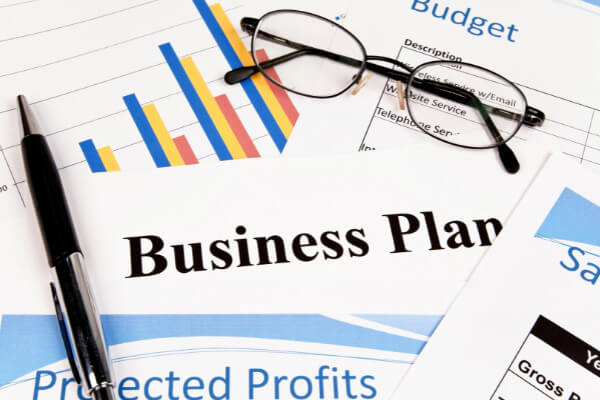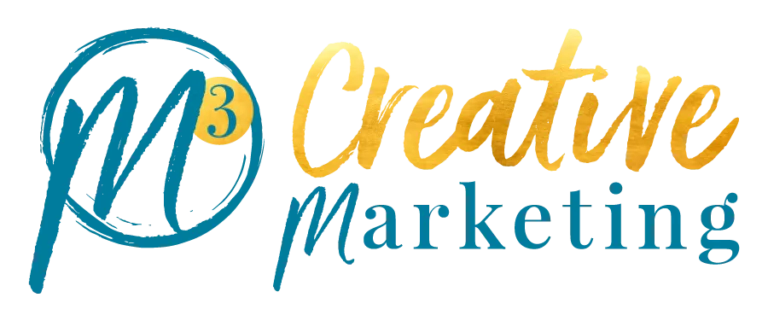
Click on the icon to listen to this episode on your favorite podcast platform.
Cynthia’s Gift: Ideal Client Workbook
Cynthia’s #1 Marketing, Media & Money Strategy
DID YOU LIKE THIS EPISODE? PLEASE GIVE IT A RATING AND REVIEW
About Cynthia Riggs
 Cynthia Riggs is The Biz Diva! She is a lifestyle entrepreneur who is passionate about the One Page Business Plan. After flying by the seat of her pants in building three successful businesses, including a multimillion-dollar company, she recognized that what had been missing was a planning tool to guide her path and hold her accountable. She knows the value of the One Page Business Plan because time and time again, she has seen it increase business success, profitability, and sustainability. Including her own!
Cynthia Riggs is The Biz Diva! She is a lifestyle entrepreneur who is passionate about the One Page Business Plan. After flying by the seat of her pants in building three successful businesses, including a multimillion-dollar company, she recognized that what had been missing was a planning tool to guide her path and hold her accountable. She knows the value of the One Page Business Plan because time and time again, she has seen it increase business success, profitability, and sustainability. Including her own!
In addition to teaching the One Page Business Plan, Cynthia is a sought after speaker, mastermind group facilitator, retreat host, and she supports women in building their seven figure businesses.
Resources and Important Links
Grab Your Free Marketing, Media, & Money Assessment
Meet Our Sponsor
The Marketing, Media, & Money Podcast (and magazine) would like to thank our sponsor Meg Schmitz, founder of Take the Leap franchise consulting company.
The franchise industry is booming as people look to diversify their income streams with essential businesses, without having to quit their day job. If you have ever considered what it would be like to own your own business with the security of a solid brand behind you, schedule a call with Meg. The conversation is free, and the insights are priceless. https://MegSchmitz.com
5 Steps To A One Page Business Plan That Works! With Cynthia Riggs
I’m excited that you are going to guide us in learning about this One Page Business Plan. You call it a protocol. That is something that people need to think about. A lot of times, we think, “I have a checklist or tip sheet,” but we have all been through all of those things. I love the idea that this is a protocol and that there are steps and that there are only five in this One Page Business Plan. Walk us through what the steps are one step at a time. What’s the first step?
I’m going to give you a slight overview and then I will pull back to the steps. What I always like to tell people is sadly I did not invent the One Page Business Plan. It was developed by a gentleman named Jim Horan. He’s a fabulous person, my friend, my mentor, and my guide for many years. Unfortunately, he passed away. He’s a corporate guy.
This is a protocol for multilevel layers of management and big companies. I adopted it for entrepreneurs and small businesses because it fits this idea I had in my head of what this planning tool that I had envisioned that I didn’t know exactly what would look like. That’s how this all started. The protocol piece of this is that my job is to teach you the One Page Business Plan because, ideally, you will want this in your life and you will continue to work with your plan over time.
It’s a living, breathing document. Before I get into the five parts of it, this is probably the most important and most valuable piece of this One Page Plan is that it moves and grows with you and it’s your partner. It can be your accountability and tracking partner. It’s a way to gain a deep understanding of what you do translates into, is it working or not? Unfortunately, a lot of us have pictures in our heads of the things we do and the results we get and they don’t line up all that well with the reality of our situation. That’s one of the things I personally love about it.
I also think that one of the things that I like about how you adapted that is because the life of an entrepreneur is fluid. It’s changing all the time. Trying to keep yourself to a business plan per se when people have done these big extensive ones. The bottom line is your business is going to change and if the last two years didn’t show us that, because five years ago, when people said, “Where do you see yourself in five years?” This is not it. With that said, it does have to be fluid. It evolves because your business evolves, opportunities come. I love the fact that while it is a protocol, it does move with you. It outlines the things that you need to do to create success in your business.
Truthfully, that big fat 35-page business plan, you only write those when you need funding. That’s the only reason to write one. You get the money, it goes in the drawer. You need more money, it comes out. You update your cashflow projections, you get the money, and it goes back in the drawer. It has nothing to do with guiding the process of business. I have to throw that in there because that was my experience with business planning when I had my company.
The beauty of the One Page Plan is that there are five parts. These words are going to be commonplace. You are going to have heard them a bazillion times, vision, mission, objectives, strategies, action plan. Those are not new terms to most of you but the One Page Plan has a specific protocol and a specific way of interpreting these words for the purpose of getting your plan on one page.
Vision
We start with the vision. The vision is like, “What do you want to be when you grow up? What do you want to be when you are ready to exit? What do you want to be 3 to 5 years down the road?” It’s not about now. It requires you to step out of your comfort level of what you know and imagine what is possible for yourself.
This is very difficult for people to do. We are much more comfortable in what we know. Venturing out of what we know into what we imagine is possible is a bit of a challenge. My job is to help you take a risk and allow yourself to believe in the possible future for your business. You want to ask me something, I see.
I do because you said one of my favorite words, which was possibility. Sometimes what happens is when people do make this intensive business plan, they also feel like they have to stick to it. Like, “I did all this work and all of this.” The fact of the matter is that when we think about our vision and the possibilities we meet people, our life changes, and our balance sheet changes. There are a lot of things that change. We are always getting new ideas.
Thinking about possibilities, I like that because it is a simple process that you are talking about. It’s also going to make it easier because I feel like the two biggest things that you said are, 1) You’ve got to get started, and most people won’t because they are overwhelmed. 2) I love that the last step is the action plan because you still have to take action. I feel like you are tying that all up and making it not only a protocol and a process but you are simplifying it. Entrepreneurs need that. I love that you talked about that.

ONE PAGE BUSINESS PLAN: THE PROTOCOL PIECE OF THIS IS THAT YOU WILL WANT THIS IN YOUR LIFE AND YOU WILL CONTINUE TO WORK WITH YOUR PLAN OVER TIME. IT’S A LIVING, BREATHING DOCUMENT.
Mission
It prompts you. Each part of the plan prompts. That’s one of the beautiful parts of the protocol that Jim developed that I’m very passionate about. We have the mission statement. I’m going to say right up front that the mission statement and the One Page Business Plan protocol are not like your traditional mission statement.
In the world of business, a mission statement is your value proposition. Every company has one big or small, it’s free or internal, your employees, staff, contractors, clients, distributors, and whoever. That’s typically what a mission statement is. In the One Page protocol, it functions more as a marketing tagline. It’s 3 to 5 words that support that vision.
This is how I adapt it. The whole idea is what’s going to get somebody’s attention. You have the name of your business. It might or might not say what you do. If it doesn’t say what you do, you need that tagline that gives a little bit of detail and information but you want it to be catchy and interesting. You want people minimally to say, “What do you do?”
Framing yourself in your business. You pay a lot of money to get marketing taglines. The beauty of doing this in a group is that you get the group’s brilliance on you. We come up with fabulous ones. I’m not going to say everybody gets one but a lot of people do. I tell those people, “Even if you’ve got one, you want another one because it’s a great marketing tool. You want to use it.”
Objectives
That’s the mission statement. We go to objectives. Objectives are that quantitative mathematical counting and tracking part of the plan, which you’ve got to have, in my opinion. The first objective is always gross revenue. How much money did you make this year? How much do you want to make in the coming year?

ONE PAGE BUSINESS PLAN: THE BEAUTY OF THIS PLANNING TOOL IS THAT YOU ARE PUTTING A STAKE IN THE GROUND BUT IT’S A VERY FLUID AND FLEXIBLE STAKE. IT’S GETTING STARTED BUT YOU ARE NOT STUCK.
Like you ended 2021 with blank. You want to end 2022 with why. For most people, it’s growth. Some people are happy to keep it even keel but most people are looking for growth. That’s where you start. The rest of the objectives focus on, what do you need to track to know you are going in the right direction? It’s going to be different for every business.
For people who are newer in business, I always request that they break their revenue down by quarters. It’s because if you have an annual revenue figure, then you are giving yourself twelve months to get there. What I notice about people is that that’s not very motivational because you still have so many months to do it.
Whereas if you’ve only got three months to do it, you are a little more on it. You are a little bit more motivated to see, “I want to make $10,000 in the first quarter. What am I going to do? I’m going to make $50,000 in the first quarter. What is that going to look like?” You can break it down into the different revenue-generating areas of your business. “I’m going to generate X amount from this Y amount from that Z amount from that.”
The idea is you are paying attention to these numbers. If you’ve overestimated, you reduce. If you’ve underestimated, you increase. It’s real-time. The idea is the plan should be current and real with what is going on. The beauty of it, if you are looking at it regularly, I get very excited about this. It’s silly but I do. You get to see whether what you think and what you’ve put in place is doing what you want it to do. I have to tell you, when it works, you are a rock star. It feels fabulous to have put the pieces together and get to the place that you thought you might go. I also will say that if you don’t get there, you have time to reframe. You haven’t lost anything.
It’s a very positive way of looking at business. As with money in general, your show has that word money in it. A lot of people prefer the head in the sand. They don’t want to know too much about it. They are going to hope for the best in all different areas that deal with financial stuff. If you are a person who either has that tendency or a person who gets off as I do on following the money, this is a good tool to help you either way.
Strategies
One of the things about the objectives, which I talked about the strategies, which are coming up in the action plans, is that we need alignment. You’ve got this vision. Your strategies, objectives, and action plans, you might have what we might call some repetition because how are you going to substantiate the things that you are tracking?
You want to make sure that there are some commonalities between those three sections of your plan because otherwise, you are giving yourself so much to do that it will never happen. That’s a little overview before we dive into strategies. Strategies are the foundational component of the plan. Your objectives are only good for twelve months. They don’t go any longer. You have to re-up every twelve months, minimally.
Strategies are long-term over time. They can be there forever. Your strategies traditionally are a couple of things. It’s where your values and beliefs come in. You don’t have that in your mission statement because that’s more of a marketing tagline. This is a place where what is important to you will show up. It will be things that you are already in the process of doing, things that you are not yet doing but you want to, and things that you would like to that you don’t even know are possible yet.
The strategies are, it’s knowing what you think it’s going to take for this business to get where you want it to go. It’s a pragmatic thing and it’s also an internal thing. It depends on the person and the business and how you are looking at it. The first strategy is always a positioning statement. It’s you who are loud and proud. “What do I want to be known for when I reach that vision? If I’m overhearing somebody talk about me in that elevator, what are they saying about me? What do I want them to know about the brilliance, fabulousness, and excellence that I’m bringing to the world?” We start with a positioning statement.
From there, it goes into, “What’s your marketing strategy? Do you believe that what marketing is going to serve you?” It could be a combination of things you are doing. Things that you want to do. Things that you imagine would be helpful to do. If you have staff, you might have how to keep good employees or how to maximize the benefit of having a staff or a team.
How to build your team? That could be one infrastructure. Do you need a CRM, a new website or bookkeeping? Use your QuickBooks. You don’t have any QuickBooks. It’s very different for different people but the infrastructure is things inside of your organization that need to be stronger to support the growth.

ONE PAGE BUSINESS PLAN: THE IDEA IS THE PLAN SHOULD BE CURRENT AND REAL WITH WHAT IS GOING ON.
They need to be pillars, so they can help you.
Strategies, in general, are pillars. You don’t want to make a business decision that’s not aligned with your strategies, is what I tell people.
You are talking to the right person when you say that because strategy is my favorite word.
Action Plan
You have an exit strategy. The word around business school is that you need to know your exit plan the minute you open up your business plan. You need to know how you are getting out of it. Are you going to die in it? Are you going to hand it off? Are you going to sell it? Building a business to sell is a very different model than not building a business to sell. It’s important to have a picture of what your plans are with the business. Lastly are the action plans. They are big projects.
If you are a solopreneur, I tell people one a quarter is plenty. It’s like for a year, not fifteen. No matter how much I give my spiel, I get everybody’s task list. My job is to work through your task list, put things where they need to go and get them off altogether. The bottom line is that offline to the business plan, you are going to have your project management tool, whatever you use, whether you are a list person, Excel person, a project management person.
You are going to have something that’s going to guide the process of this action plan because it’s not something that you can think about today and do tomorrow. There are typically other people involved. It is a time-consuming thing. It’s a resource-intensive thing a lot of times. It could be writing a book. It could be a marketing or business plan.
It could be doing a new website or a social media launch. It could be getting all your financial books in order. It depends on what it’s going to be for different people. You want to grow your list. You want to do this and that. The most important thing is to set your vision and then have the rest of your plan work in tandem in terms of in the next twelve months, you can see that you are going to make some progress towards that vision.
My favorite is if you update it every quarter. It’s not that easy for me to motivate people unless they are working with me and I make them. If they come to a class and then they go on their own, I hope for the best because you don’t know people have a good experience doing it. What I tell people is, “Even if you are not aligned with the value that the business plan brings to you, if you do the webinar, what happens is you are pushed to think about your business in a way that most of us do not push ourselves to think.” It’s over a period of time, so it excites people.
It brings up a couple of questions. My first question is that I love that it’s a living, breathing document. It’s something that you can refer back to. Every time as entrepreneurs, we come up with new ideas all the time. We can then refer back to and say, “How does this fit into my business plan?” Here’s the question that came up for me when you were doing that. Some people have multiple businesses but then there are people who have multiple divisions for lack of a better term.
I will use myself, for example. In my company, I do marketing and media but I have a show. I have a magazine. I do live events. All of those are called marketing media and money. Those are different divisions of how my company works. Based on your protocol, would there be a One Page Business Plan for each one of them or each one of them being part of the strategy and that action item within the one plan?
How I answered this question, in general, is with this. One way you can do it is, you can write a plan for each division of your business but ultimately, you need one plan. Is your magazine off your plate and Susie does it, for example?

ONE PAGE BUSINESS PLAN: THE MOST IMPORTANT THING IS TO SET YOUR VISION AND THEN HAVE THE REST OF YOUR PLAN WORK IN TANDEM.
I have team members. I have six people that work for me.
Does anybody have a responsibility to activate any part of your business?
Every person on my team has a part of my business that they activate.
Here’s one of the beautiful things about the One Page Business Plan. Patty writes her business plan and it would encompass all of the parts and parcels of your business. Your vision would have what the show and magazine are going to be five years down the road. Susie is going to be one of your team members.
Let’s say Susie is in charge of the magazine or she’s your main magazine driver. What Susie does is looks at your plan. You share as much of it. You don’t have to share the financial information but you share the plan. She writes a plan for her division. She’s the one that drafts the plan for the magazine. She can do it in partnership with you. The team could do it but she owns the magazine. This is in my story here.
Doing that does in that sense because the reality is you have a team. Anybody who’s an entrepreneur has a team. Those teams could either work in tandem together on projects. A lot of businesses do that. While I do have people on my team that there’s a social media person, the editor of the magazine, there’s a show. My team takes care of that.
They do have to do things together. The podcast people work with the social media people for the graphics, for the podcast or whatever. With that said, they don’t come up with the plan because I’m a strategist. I have the plan, the strategy, and the action plan. Within that, we have meetings separately for how those things are going to get done, and then within that, how they work as a team. I can see what you are saying, which is interesting. I didn’t want to make it convoluted. I wanted to know, whether I should have more than One Page Business Plan but I feel like I’ve got almost break it down and then tie it in. I answered my own question in a way.
I’m going to offer a little bit more about this because it’s important. If you think about how corporate structure works, there are multilevels of management. The reason that the One Page Business Plan is an excellent tool in that situation is a lot of people who manage people in whatever capacity are not the best delegators and perhaps they are not even the best managers.
Their communication might or might not be good. The reason this protocol is excellent when you allow other people to bring forth their vision and their strategies is that, 1) You are delegating a lot off of your plate. 2) Not only are you allowing them to take charge a little bit but also it can be very collaborative. It doesn’t mean they have to go off and do it but then everybody is so much more on the same page. It’s that alignment thing.
I have a client who talks all the time about how CEOs have a tendency to spend all their time fighting fires. Part of the reason that they have to fight fires all the time is that they have set their business up so that nobody can move forward all the time unless they are involved in the process. Setting it up so that people can move forward, they do answer to somebody but that’s the person who answers too, knowing how to set that up. That is very important not to become a firefighter.
I could see where this right here also would play into how great that is, which is funny. He has a sidebar. That person is somebody I have been wanting to introduce you to. It’s funny that that introduction will be coming. That is interesting. I love that it’s a protocol and a process but that it is fluid and simplistic.

ONE PAGE BUSINESS PLAN: YOU HAVE A BEAUTIFUL TOOL TO GUIDE THE PROCESS. YOU DON’T HAVE TO MAKE IT UP EVERY TIME. YOU DON’T HAVE TO GUESS. YOU DON’T HAVE TO DO SO MUCH BACK AND FORTH WASTE OF TIME STUFF.
The bottom line is anything that we could do to have somebody get it done rather than have all these different pieces of paper, and then they don’t move forward because they are not exactly sure. This living, breathing document also helps keeping them moving forward, which ultimately is the name of the game.
Especially as a coach or a consultant, you have a beautiful tool to guide the process. You don’t have to make it up every time. You don’t have to guess. You don’t have to do so much back and forth waste of time stuff. You have a common picture of where we are going and then coaches and consultants’ job is, “We are going to get you there. We are going to support that process.” All my clients are required to have a business plan. I can’t work with them at this point. I have worked myself out of all my imagination. Now, I want more concrete.
If you think about it, us entrepreneurs and small business people want to do better, make more money, and grow. We typically think in that direction. One of the things that I have learned over the years is that growth requires commitment. The One Page Plan is a way to identify and up your commitment to that next level because it’s not going to happen randomly. A lot of people strive for it and don’t get it. A lot of people strive for it and do get it. Sometimes it’s what the product or the service is but a lot of times, it’s who the people are. They don’t know what they don’t know.
That is so true. Let’s look at this differently. Let’s say they take your webinar and you help guide them to create this One Page Business Plan. Are they able to take that One Page Business Plan and move forward? Are you still in the process? Do you still offer support and collaboration with them? We don’t need to go into that now, as far as we only have so much time on this show.
I do want people to know that that is something that can happen. If they do this, you can still stay with them because people love to have a partner. You could partner alongside them to help them through the whole way. If they do need additional support, you are able to give that to them, should they want that?
One of the gifts that COVID gave me in the One Page Business Plan was focusing on doing it in a webinar fashion. I used to do it as an in-person Bootcamp. People loved it. They put them through their paces. They’ve got good results. Doing it in a 5-part, 2-hour-a-week webinar means that you have a lot more time. What I do is provide my feedback all throughout via email. By the time you are done with my class, you have a plan. It’s not a bunch of ideas on a piece of paper. Some people choose to work with me. That’s fabulous because now we have done the groundwork and we can go. Other people take it and do what they will. It works both ways.
I have a question. Maybe I wish I would have asked this first but it will work either way. What I want to know is when people are thinking about business plans, one page or otherwise, what do you think the most common myth is about them that people believe? People have this idea that when they hear a business plan, they are troubled. Why do you think that is?
Mostly, people are thinking about what we would call a traditional business plan. It’s not a skillset that most people have. It takes a lot of time and energy. It’s scary. They don’t know why they need it unless the bank or their funders have told them they have to write one. It’s a lot of work for, “What reward is? What comes up for people?” I ask that question when I speak a lot and people say, “It’s mostly time. I don’t have the time. I don’t know how. I know I should but I know I should not.” It’s pretty commonplace. There’s nothing very exciting about that question in terms of, “It’s not some great unknown that we are uncovering here.”
For me, I’m very creative, big picture, and visionary. I have to say, what I like about the idea of the One Page Business Plan is that I have to do those things. Obviously, marketing media money but those are not my favorite things to do. I would much rather design and do creative stuff, and then think about, “I need to be able to track that and measure this and do this and that.”
The beauty of it being a living, breathing document gives you something to come back to. It’s aligning with your beliefs and vision, and that is so important. I believe not just as an entrepreneur but the things that I keep thinking about is that in the world we are in now, this is how I built my business through collaboration.
What’s interesting about this is if you were going to partner with somebody, you are going to collaborate with somebody on something. You wouldn’t share with them maybe the money part that you put in there but this having this is a great way very quickly to be able to have a discussion with someone and see if that aligns with your beliefs and values, so you would know whether they would be a good collaborative partner and see where they are. The name of the game is getting to the marketplace faster. If you can do that by bringing on somebody and collaborating with other people, that’s a fabulous thing. It can also be a nightmare if you don’t do it right.

ONE PAGE BUSINESS PLAN: KNOW WHO YOUR IDEAL CLIENT IS BECAUSE OF THE BUSINESS PLAN AND ANY OTHER MARKETING, YOU WANT YOUR IDEAL CLIENT TO BE THE ONE THAT HEARS EVERY WORD THAT COMES OUT OF YOUR MOUTH, OUT OF YOUR PEN, HOWEVER THEY ARE HEARING YOU.
This also would help with that. I love it when I do something. It can be used in multiple ways but being able to nail down who would be good collaborative partners. To make sure that they are on the same page as you would be a whole other process, for me, that would make it so simplistic. That is something that would be important because I am all about collaboration. I know other people are too. That is good. If somebody had this business plan, so now they do this thing. They have this One Page Business Plan and take your webinar.
You do offer support. That is fabulous that you give them the opportunity to be able to move on from that. I also feel like when they are going to apply it, one of the things that’s also important is making sure that when you are going out to do that, you are talking to the right person. You are talking to your best ideal client. One of the things that I love is you didn’t just come to the show so that you could talk about the One Page Business Plan. You also have a gift for my audience that’s going to talk about your ideal clients. Now you can apply what it is that you have shown them. Tell us a little bit about that gift.
What I have learned in my years is that there’s a lot of resistance to honing in on ideal clients. What happens is we want to be everything to everybody. We don’t want to leave anybody out. We don’t want to miss any opportunities. We are very hesitant to dial in that ideal client. What I have done is I have created a workbook. It’s a fill-in-the-blanks workbook that is fun to do. I redo it every year for myself to see what’s changed in terms of my feelings and thoughts about my clients.
I encourage you to know who your ideal client is because of the business plan and any other marketing, you want your ideal client to be the one that hears every word that comes out of your mouth, out of your pen, however they are hearing you. The riff-raff will come along. That’s what I tell people. It’s not that other people won’t be interested in you and won’t hire you but you want your ideal clients because that’s where you are going to get a maximum mutual benefit. It’s a downloadable gift from my website. I’m happy to offer it to you because I know the value it will bring you if you take some time and work through the workbook and come up with a description, a caricature of who that person is for you.
That’s important. If you are reading now, look below. There’s a button there for you to be able to download that workbook. She also has it on her website. Let’s talk a little bit about that. If somebody wants to connect with you, and I absolutely know that they will, where do they go to do that?
BizDiva.biz. I make it easy.
From somebody who has pretty much read her website, every single one of those pages, she’s got some real nuggets there. There’s a lot of gold. I plan on spending a little bit of time diving in there because you are going to get some great content. Cynthia, thank you so much for being here with me and being absolutely generous with your knowledge to break that down for everybody and bringing an amazing gift that’s going to help too.
I am so pleased to be here. I love you even more than I did before. I’m happy to be a value to your tribe. Thank you again for having me.
To my tribe, this isn’t the last you are going to learn from her. Stay tuned. We are going to have her back because I get so many questions and many things I wanted to share. As I did spend that time, I know that she has some other things that she could share with you too. I’m thankful that she is here. Thank you for joining us on the show. If you enjoyed this episode and I am sure you did, please subscribe and review the show on your favorite listening platform. Until next time. This is the end of our time together here. Make sure you jump into our Facebook group and read our magazine. Make sure to connect with Cynthia. You are going to want to make sure you do that. I will see you next episode. Thank you so much, everyone.

